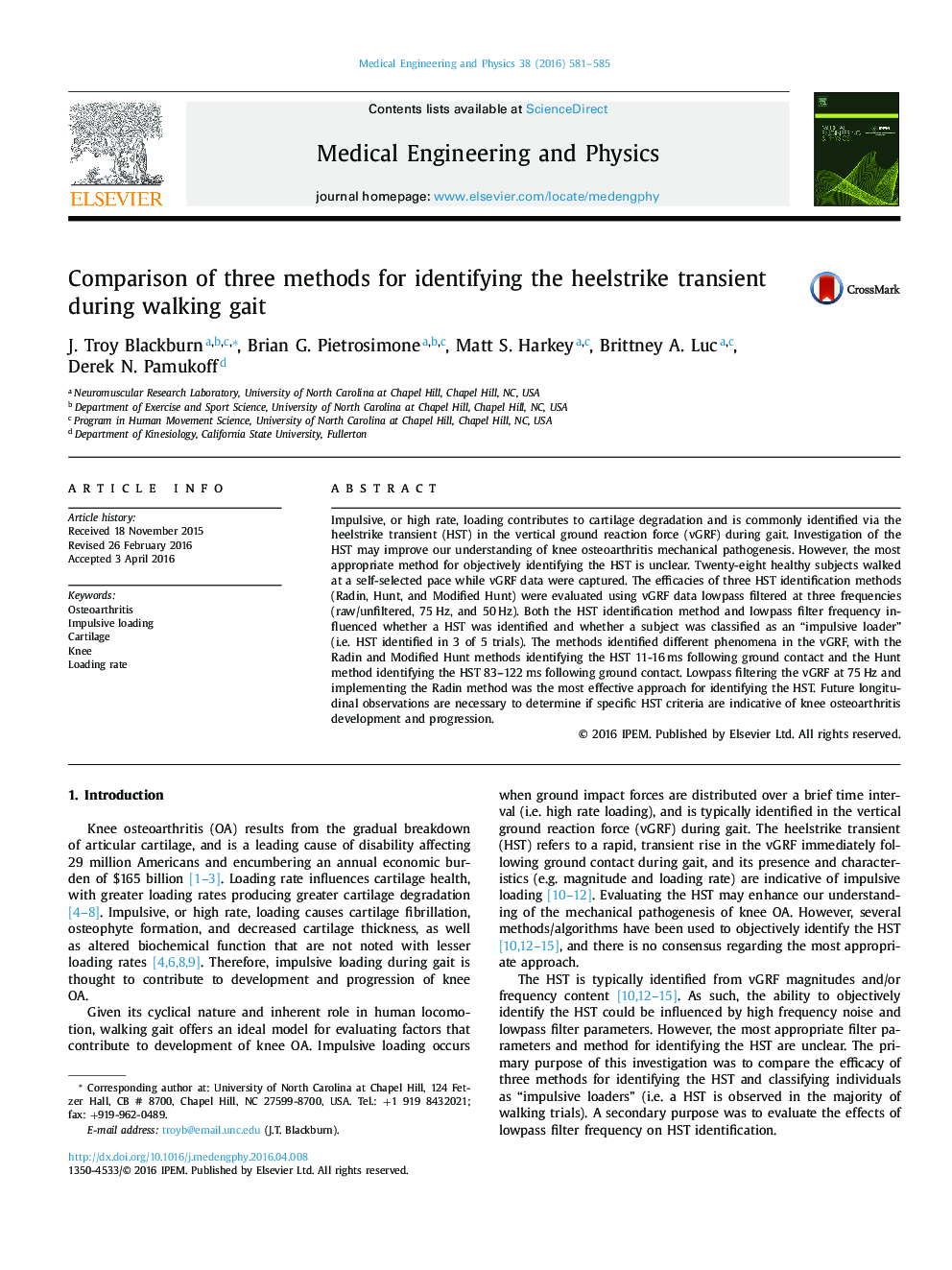| Article ID | Journal | Published Year | Pages | File Type |
|---|---|---|---|---|
| 875666 | Medical Engineering & Physics | 2016 | 5 Pages |
•The heelstrike transient potentially provides information regarding the mechanical pathogenesis of knee osteoarthritis.•The optimal method for objective identification of the heelstrike transient is currently unclear.•The identification method and lowpass filter frequency dramatically influence identification of the heelstrike transient.•The method proposed by Radin et al. using vertical ground reaction force data lowpass filtered at 75 Hz permits optimal identification of the heelstrike transient.
Impulsive, or high rate, loading contributes to cartilage degradation and is commonly identified via the heelstrike transient (HST) in the vertical ground reaction force (vGRF) during gait. Investigation of the HST may improve our understanding of knee osteoarthritis mechanical pathogenesis. However, the most appropriate method for objectively identifying the HST is unclear. Twenty-eight healthy subjects walked at a self-selected pace while vGRF data were captured. The efficacies of three HST identification methods (Radin, Hunt, and Modified Hunt) were evaluated using vGRF data lowpass filtered at three frequencies (raw/unfiltered, 75 Hz, and 50 Hz). Both the HST identification method and lowpass filter frequency influenced whether a HST was identified and whether a subject was classified as an “impulsive loader” (i.e. HST identified in 3 of 5 trials). The methods identified different phenomena in the vGRF, with the Radin and Modified Hunt methods identifying the HST 11-16 ms following ground contact and the Hunt method identifying the HST 83–122 ms following ground contact. Lowpass filtering the vGRF at 75 Hz and implementing the Radin method was the most effective approach for identifying the HST. Future longitudinal observations are necessary to determine if specific HST criteria are indicative of knee osteoarthritis development and progression.
